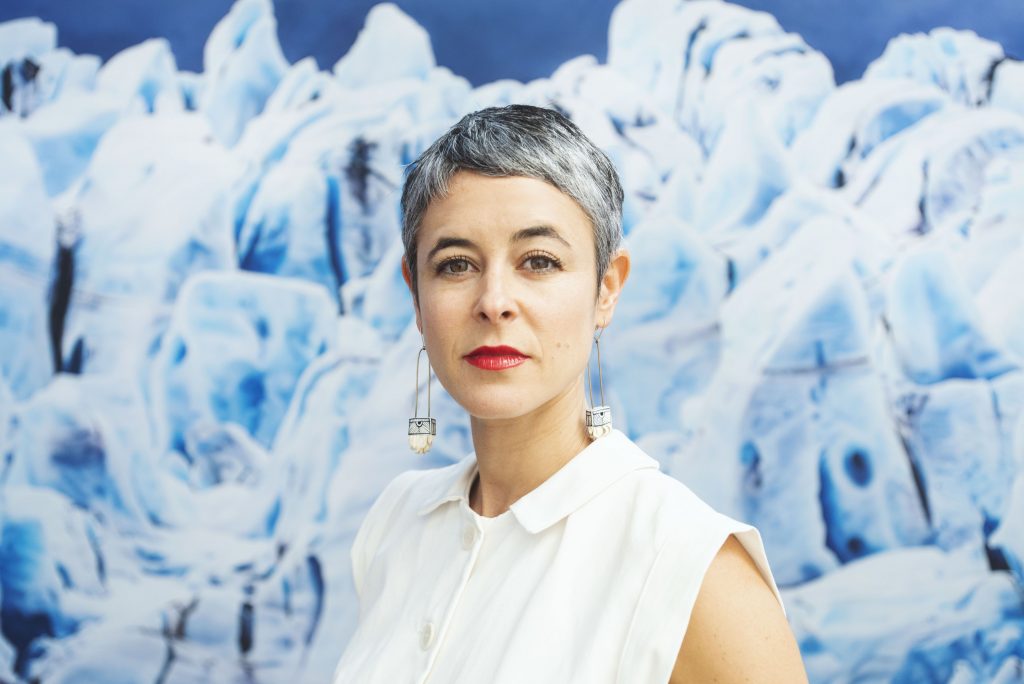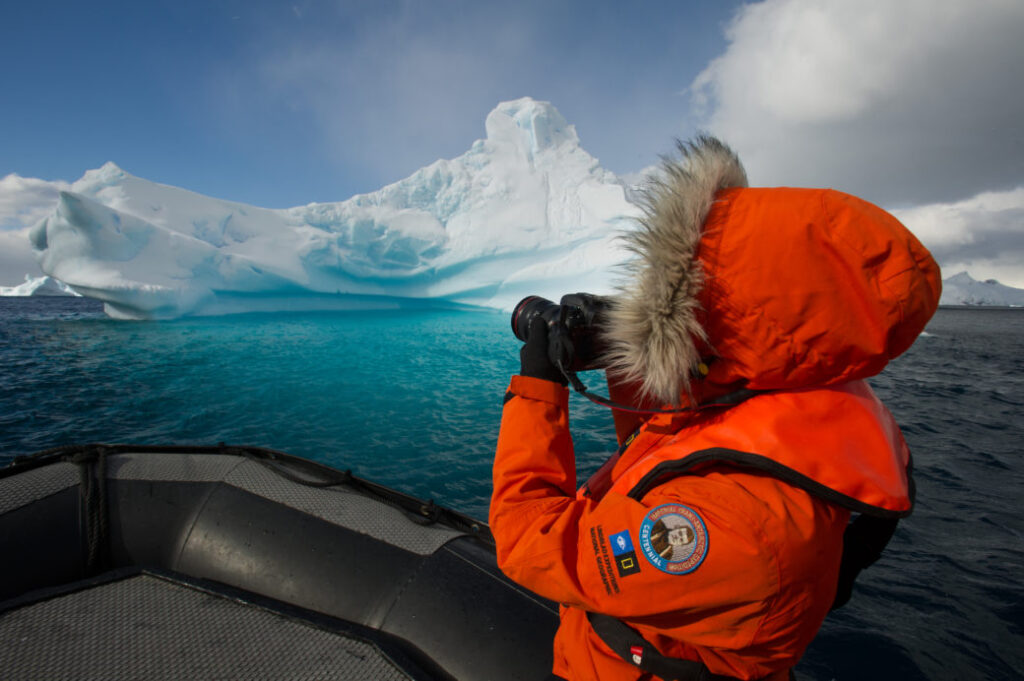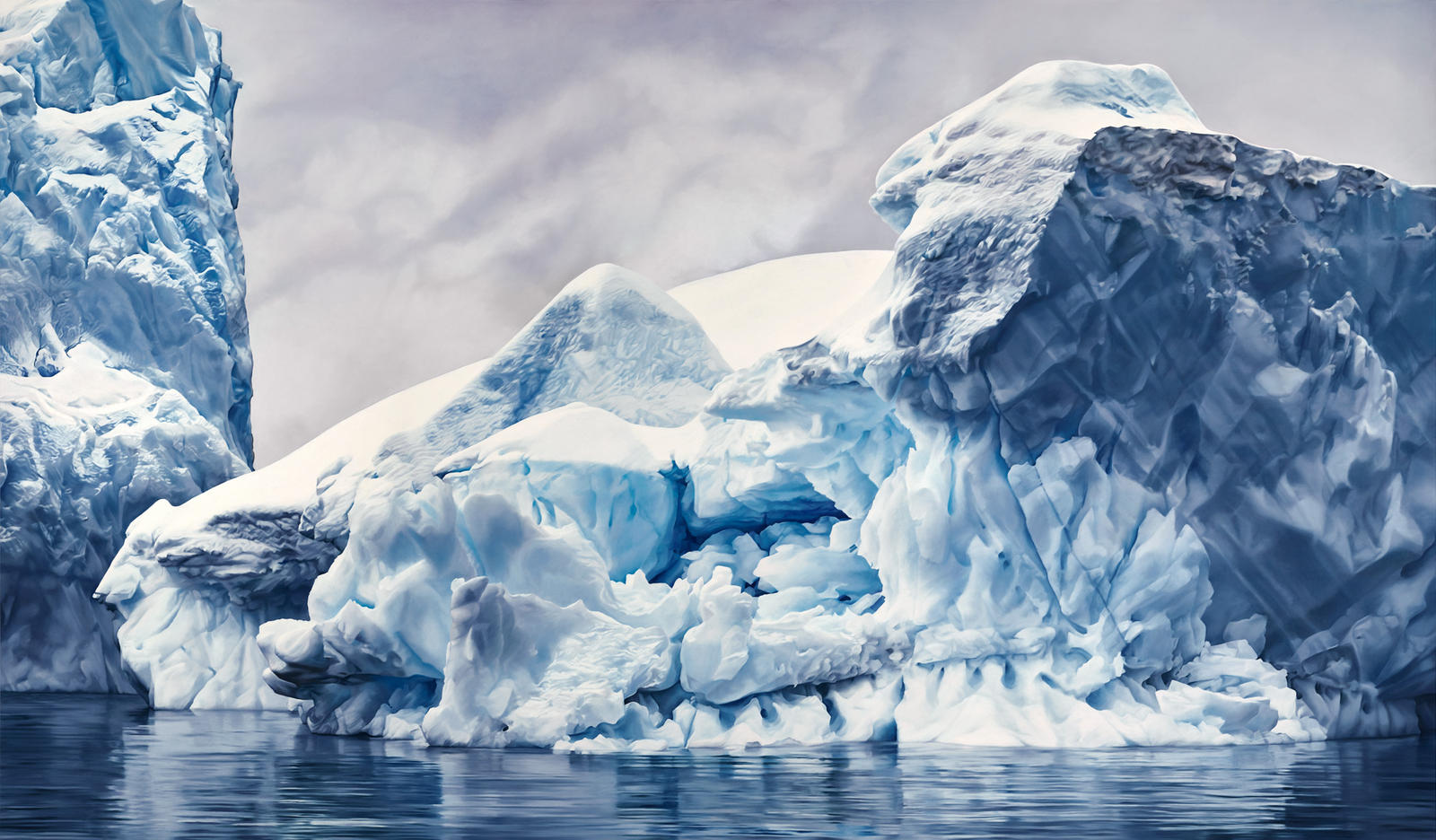Have you ever wondered what makes us make decisions? Studies from Harvard University have shown that human beings make decisions and act based on our emotions. Other studies also show that art impacts our emotions more effectively than the news or other media. This is how art and science connect. For example, you can hear the word glacier and describe what it is, but if you see a picture of it, it will be a totally different experience.
An example of this are the works of the artist Zaria Forman. Huge canvases with
hyper-realistic pastel drawings of glistening icebergs, arctic waters and tropical waves.
Her work is so realistic and detailed – it is almost mistaken for a photograph – that she gives us the
impression of being surrounded by this impressive nature.
But who is Zaria Forman?
Forman was born in South Natick, MASS, grew up in Piermont NY, a small town a
30 minutes north of Manhattan. She momentarily lives in Brooklyn, NY, where
she has her study. Although at the moment she focuses mainly on art, she is also
yoga teacher and jewelry designer.

The inspiration for his drawings begins with his mother; Rena Bass Forman, who was a landscape photographer and thanks to her work, every summer for a month they traveled somewhere. At first, they start going to nearby places in the United States and when she was between ten and eleven years old, they start leaving the country every year. Her work is totally linked to these childhood experiences. Thanks to them, she was able to develop an appreciation and connection with nature and with the phenomenon of climate change. Her mother taught her a lot about light and the ways you can capture and illuminate a landscape and this can be seen in the way she represents her work on paper.
What does the artist want to express to us with her work?
Zaria’s work is a way of documenting the earth and climate change, a way of expressing the sublimity of the earth and its forms. It can be characterized with the moments of transition, turbulence and tranquility in the landscape.
Its main purpose is to make the viewer experience the tranquility and its beauty. “Climate change is such a distant concept to most of us” is what Zaria Forman says in a mini documentary for the NationalGeographic. And with this he is trying to tell us that; Climate change is something that has been happening for decades, slowly the planet’s glaciers are melting, fresh water reaches the sea and a growth of maritime (salty) waters is created. But what happens, these changes are changes that can only be seen over time and therefore it is very difficult to do it consciously in our day to day life.
Zaria Forman was invited to join NASA’s Operation IceBridge, between 2016 and 2017. This was an aerial scientific mission that has been mapping the changes in the ice of both poles for more than a decade, the artist has expressed having felt the power and the fragility of the landscape – you can see how the iceberg has life and movement in a way that you did not expect.

The Iceberg as a source of inspiration for his works.
As our climate changes, the thaw accelerates. The rate at which all of Antarctica is losing ice has tripled in the last decade. The IceBridge missions are collecting critical information that can tell us how this ice loss is occurring and what these changes mean for sea level rise and coastal communities around the world. Zaria’s art can be seen as a way to help communicate not only the importance of what these scientists do, but also as a way to translate scientific data into a more accessible, more digestible, and more emotional medium.
Over time his work has appeared in well-known publications such as NationalGeographic, Smithsonian Magazine, Wall Street Journal, and TheHuffington Post. He is currently part of the online group show that runs from April 8 to July 22. “ACTORS FROM WITNESSES” At Mana Contemporany, an art gallery in the United States. This collective is made up of both artists and scientists who invite us to see how the mix between art and science can achieve great things.
Since Zaria Forman’s work is not completely linked to sustainability and perhaps the materials she uses are not completely eco-sustainable (and the paper she uses for canvas still comes from trees), anyway, it is important to value her work and take it as a source of inspiration and information to be more aware of the importance of icebergs, their fragility and how easy it is to fall in love with them and safeguard this resource.
It may also interest you RespirArt,Alpe di Pampeago





